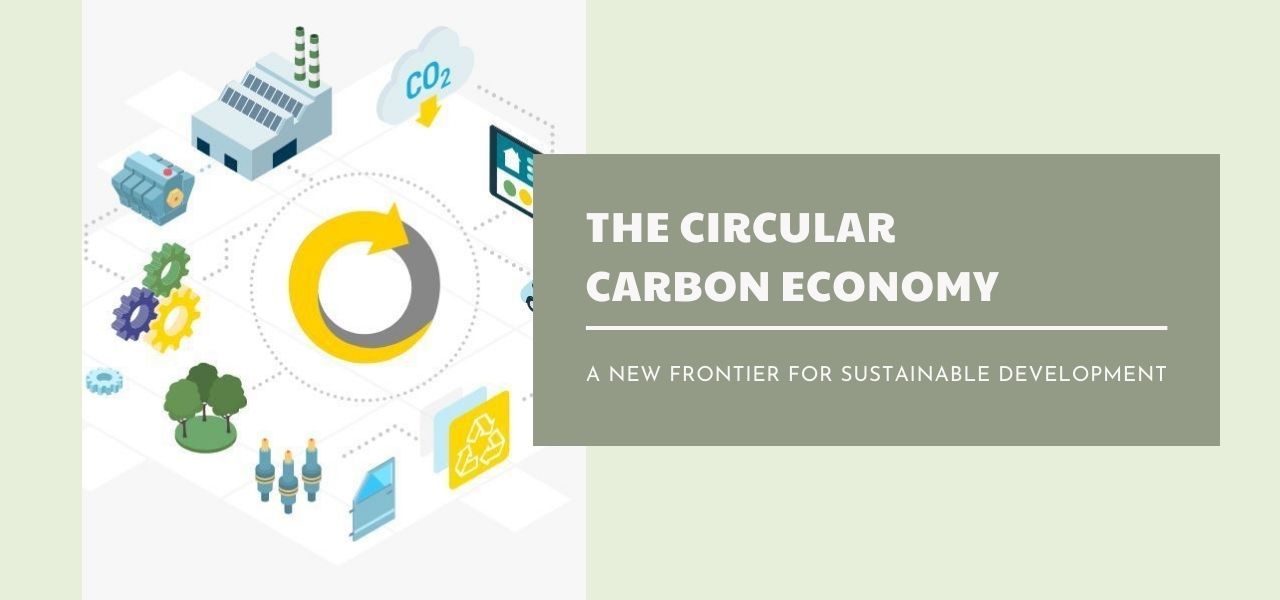The Circular Carbon Economy: A New Frontier for Sustainable Development

The circular carbon economy is a new frontier in sustainable development that presents a promising pathway towards decarbonization. It involves reducing carbon emissions while also promoting economic growth through circular economy practices. This approach has the potential to transform the way businesses operate, creating new opportunities for innovation and collaboration.
In this blog, we will delve into the circular carbon economy and explore its key concepts and benefits, as well as examine some examples of its successful implementation. Join us as we explore this exciting new frontier in sustainability.
What is the Circular Carbon Economy?
The circular carbon economy is an emerging concept that seeks to reduce carbon emissions and create a sustainable future by utilizing and repurposing carbon waste. It involves a shift towards circular economic models, where waste products are reused and repurposed rather than discarded. The circular carbon economy promotes the use of carbon capture technologies, the utilization of waste biomass, and the conversion of carbon dioxide into useful products.
One of the key principles of the circular carbon economy is the utilization of carbon waste as a resource. By using carbon waste in a circular manner, businesses can reduce their carbon footprint while simultaneously creating new economic opportunities. This approach can be particularly beneficial for industries that produce a large amount of carbon waste, such as the energy, manufacturing, and agricultural sectors.
The circular carbon economy also emphasizes the importance of carbon capture technologies, which can capture carbon emissions and store them in a safe and secure manner. This technology is a critical component of the circular carbon economy because it allows for the utilization of carbon waste and the reduction of carbon emissions.
Another important aspect of the circular carbon economy is the utilization of waste biomass. Biomass is a renewable source of energy that can be produced from organic waste materials such as crop residue, wood chips, and municipal waste. By utilizing waste biomass, businesses can reduce their reliance on fossil fuels and create a sustainable source of energy.
The circular carbon economy also promotes the conversion of carbon dioxide into useful products, such as building materials and fuels. This process, known as carbon capture and utilization, involves capturing carbon dioxide emissions and transforming them into valuable products that can be used in a variety of industries.
Benefits of the Circular Carbon Economy
One of the main advantages of the circular carbon economy is that it can help businesses reduce their carbon footprint by promoting circular practices that reuse and recycle materials rather than using new ones. This approach can lead to significant cost savings for businesses while also reducing their environmental impact.

Another benefit of the circular carbon economy is that it can create new revenue streams for businesses through the use of carbon capture and storage technologies. By capturing carbon emissions and storing them underground or in other locations, businesses can earn carbon credits that can be sold on carbon markets, generating additional revenue.
The circular carbon economy also has the potential to create new job opportunities in a range of industries, including renewable energy, carbon capture and storage, and sustainable agriculture. By investing in these industries, businesses can help to build a more sustainable and equitable economy.
In addition to these economic benefits, the circular carbon economy can also help to mitigate the impacts of climate change by reducing greenhouse gas emissions. By promoting circular practices and investing in low-carbon technologies, businesses can play a critical role in addressing climate change and creating a more sustainable future.
Finally, the circular carbon economy can help to build more resilient communities by promoting local production and consumption, reducing waste and pollution, and increasing access to sustainable energy and other resources. This can lead to more sustainable and equitable development that benefits everyone.
Approach the Circular Carbon Economy through Carbon Negative Materials
The circular carbon economy is a new concept that aims to reduce carbon emissions while promoting sustainable development. One of the key principles of this approach is the utilization of carbon waste as a resource, and AirX is leading the way in implementing this principle with its innovative use of coffee grounds waste to create plant-based plastic material.
This material has the same mechanical properties as primary plastic but is made from coffee grounds waste, which captures carbon that would otherwise be released into the atmosphere. By using this material, businesses can reduce their carbon footprint and promote a more sustainable approach to production.
The material life cycle of Coffee Biocomposite is also an important factor in promoting the circular carbon economy. After coffee beans are used to make drinks, the leftover coffee grounds are used to produce this material for finished products such as cups, cutlery, and hangers.

When these products reach the end of their life, they biodegrade into water, CO2, and biomass within 12 months, without releasing harmful toxins. These substances are essential for plant development, including the coffee plant, which can then be harvested for coffee beans, completing the closed-loop life cycle.
Moreover, the circular carbon economy approach can be particularly beneficial for industries that produce a large amount of carbon waste, such as the energy, manufacturing, and agricultural sectors. By using carbon waste in a circular manner, businesses can create new economic opportunities while reducing their carbon footprint.
If recycled, the materials can be turned into new products, carbon will continue to be captured inside the products, resulting in minimal carbon emissions. Alternatively, if the materials are biodegraded, they break down into natural elements such as water, and organic matter. These elements can be used as soil amendments to help sequester carbon in the soil, resulting in lower carbon emissions compared to materials that need to be incinerated, which emit a large amount of greenhouse gases.
>>> Learn more: The Circular Economy A New Pathway to Sustainable Growth
Contact us
AirX is the world's first carbon-negative bio-material made from coffee grounds.
We specialize in producing bio-based composites using recycled carbohydrates derived from by-products such as coffee grounds, coconut husk, husk, and bamboo. Our goal is to promote sustainability through the use of eco-friendly materials.
We are always here to help and provide the best service possible. If you have any questions or would like to receive advice and feedback directly from our sales staff, please do not hesitate to contact us. You can reach us through:
- Whatsapp: +84 969 742 950
- Email: [email protected]
We look forward to hearing from you!

